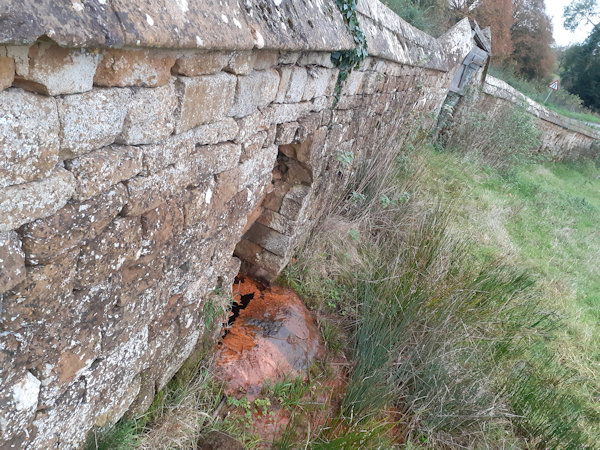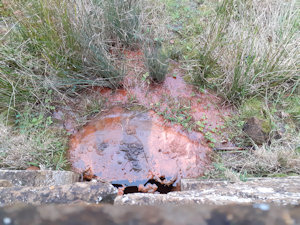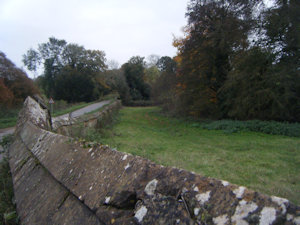 |
Dedication: Saint Botolph Location: Farnborough Coordinates: 52.141632N, -1.367927W Grid reference: SP433494 Heritage designation: none |
HOME - ENGLAND - WARWICKSHIRE
 |
Dedication: Saint Botolph Location: Farnborough Coordinates: 52.141632N, -1.367927W Grid reference: SP433494 Heritage designation: none |
Farnborough's holy well, though now little known, once had something of a local reputation. Although St Botolph was based mainly in East Anglia, it is likely that he visited Farnborough at some point during his time as a missionary in the 7th century, and founded the church, which bears his dedication. This theory is supported by the presence of several other ancient churches that are dedicated to him in the surrounding area, such as St Botolph's Church in Slapton, Northamptonshire, which is only twelve miles from Farnborough, and St Botolph's Church in Rugby, which is just over seventeen miles from the well. St Botolph appears to have no churches further west than Farnborough, indicating that his sphere of influence extended no further than Warwicksire. The settlement of Farnborough was recorded in the Domesday Book, and it is possible that the village initially grew up around its newly (at that time) founded church.
St Botolph's Well itself, likely dating from the time of St Botolph's visit to the parish, has been mentioned by several historians over time, although it has mostly been mentioned in passing, and usually as part of a longer subsection about Farnborough Hall, the well having been inclosed in the grounds of it for the last few centuries or so. The site has rarely been afforded more than a short sentence - if that - and it seems that the only notable feature about the well that the majority of historians could find to mention is the fact that it is a chalybeate spring, meaning that the water contains a high concentration of iron. As a result of this, the rock in front of the well is stained orange, as can be seen in the images below. In fact, the unusual red colour of the water was at one time said to be caused by rust from the nails of the cross. William Smith, in A New and Compendious History of the County of Warwick (1830), expressed his disdain for the well:
|
Near this mansion is a chalybeate spring, which was anciently termed St. Botolph's well; and doubtless many a victim of horrible superstition has been imposed upon, during the time of the Romans, by some wonder-working miracle pretended to have been performed here. |
Not all commentators on St Botolph's Well were, however, so negative about its associated traditions (which have, unfortunately, now been forgotten). In Wells and Springs of Warwickshire by Lindsall Richardson, written almost a century later in 1928, the well is described as having been, once, "in much repute", and, only a decade before William Smith published his book, Francis Smith, in Warwickshire Delineated (1820), noted that:
|
A chalybeate spring rises at Farnborough, known by the name of St. Botolph's Well, which was formerly resorted to by the credulous and superstitious, for its wonder-working miracles! |
It is truly saddening that the only "wonder-working miracle" that is today known to have been associated with the well is its supposed effectiveness in the curing of eye complaints.
The current structure around the well, which, rather unusually, forms a part of the boundary wall of the Farnborough Hall Estate, is certainly at least two centuries old. Farnborough Hall was built by a man named William Holbech in 1684, and it is possible that the well dates back to this period, but it seems more plausible that the boundary wall dates from around 1750, at which time William Holbech the Younger remodelled much of the estate. Interestingly, however, the well is marked on early Ordnance Survey maps as a pump (and is not named), so it is possible that the recess in the wall in which the well currently sits is only around a century in age. In the last few decades, the structure has deteriorated rapidly, probably mostly due to the fact that its existence has been almost completely forgotten. After Farnborough Hall was built, and the well was enclosed in its grounds, access to the well would have been restricted or even completely denied to local residents, and it was likely because of this that the local population lost interest in their local landmark and eventually forgot about it.
Today, the well is owned and (hopefully) cared for by the National Trust, who came into possession of Farnborough Hall in 1960. When I visited in November 2024, it was impossible to gain access to the well, as the National Trust property was closed for the winter.
 |
 |
|
Access: The well can be accessed when Farnborough Hall is open during the summer months, on very specific days (best to check the National Trust's website for the exact dates), although it can be viewed at any time of the year by peering over the boundary wall directly above the well. |
The National Trust's page for Farnborough Hall, which contains information about the dates that the property is open, can be found here: https://www.nationaltrust.org.uk/visit/warwickshire/farnborough-hall
Copyright 2025 britishholywells.co.uk